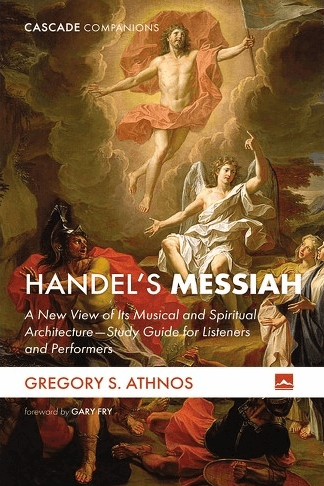The Spiritual Architecture of Handel’s “Messiah”

George Frederic Handel is one of the most recognizable names in classical music, even if most people only know his name for the Hallelujah Chorus of “Messiah.” Still, Handel was famous in his time and immediately after his death, earning the praise of contemporaries and other luminaries of music like Beethoven, who declared Handel “the greatest composer that ever lived.” Handel’s music, especially “Messiah,” remains “a sacred institution” in music, to quote George Bernard Shaw.
Is there a key to unlocking a deeper appreciation of Handel’s music? One of the problems of classical music in the twenty-first century is the apparent distance it places between itself and its listeners. While many people who encounter classical music might say there is something transcendent, nearly divine, about it, classical music lacks the gyrating immediacy of contemporary pop music. One knows, intuitively, that they are listening to something great, but it doesn’t exactly get them on their feet to dance and jump around.
Sir Roger Scruton, my former teacher, once spoke of the “tyranny of pop music” as being governed by a spirit of distraction. Pop music has no purpose other than to drown out personality and help distract the soul in its dull activities, hence the playing of pop songs over a restaurant’s music system, in the car while driving, or on your computer or phone while doing menial tasks. Classical music, by contrast, especially the Baroque style to which Handel belonged, is different. On this note, Gregory Athnos, the great music professor and conductor, offers readers an introductory overview of Handel’s greatest triumph.
Unlike the pop music that Scruton derides as distraction and not having much of a purpose beyond that, Athnos writes, “At the center of the [Baroque] doctrine was the belief that composer could create a piece of music capable of producing a particular and specific involuntary emption/spiritual response in their audience.” The transcendental feeling and experience we have listening to classical music is not accidental. It is intentional. What undergirded the Baroque spirit was an understanding that the beauty, power, and passion of music expressed and communicated deeply interior and spiritual truths to its audience. And this is exactly what Handel set out to achieve with the help of Charles Jennens in composing “Messiah.”
Jennens was an English aristocrat and patron of the arts, a fervent Protestant Christian at war with the encroaching Deism and secularism of English society. He believed that art and music was a means of evangelization. And being a great admirer of the already famous Handel, himself a devout Christian, the two would form a friendship that would give to the world Handel’s most beautiful and stunning musical triumph. Athnos describes “Messiah” this way, “It deserves to be called the single most inspiration musical combination of faith and art in the history of the world.”
What follows in Handel’s “Messiah” is Athnos’s pilgrimage across the oratorio, providing for readers some of the intellectual and historical backdrop before proceeding into a cursory but more importantly very readable and understandable analysis of the music, how it weaves biblical writings into the music that has captivated audiences since its first performance in Dublin in 1742. Athnos tells the story of how Handel’s most famous music composition came into existence and what the music itself tells us.
Here, Handel—with the help of Jennen’s biblical folio—sought to blend “musical transformation” with “spiritual transformation.” The music embodies spiritual and religious sentiment, communicating to the listener what the transformed soul should be experiencing. The music of “Messiah” is the music of the Christian story, the soul’s transformation from the darkness of bondage to sin to the “bright side” of redemptive joy in the resurrected Christ. “Messiah” is really a work of systematic theology told through the beauty and brilliance of music.
The skill to compose music which combined “joy, hope, and trust in God” stands as a testament to Handel’s genius. What is most impressive about Athnos’s book is how he flawlessly explains the “musical and spiritual architecture” of the music, what its many arias, recitatives, and choruses mean—from pain, suffering, hope, joy, serenity, and more. Athnos has written the best introduction to Handel’s greatest musical accomplishment.
“Music has power,” Athnos writes. For many of us who experience that transcendental power of music, we cannot help but agree with that statement. “Music is capable of reaching the deepest recesses of the human spirit where no other art or language can go. Music can achieve this even without words; it communicates in its own unique way.” All true. But Athnos gives us the words and communicates to us what Handel was communicating with his music. Anyone who desires to understand Handel’s “Messiah” to accompany the feeling and experience of his music would do well to have Athnos as their guide.




